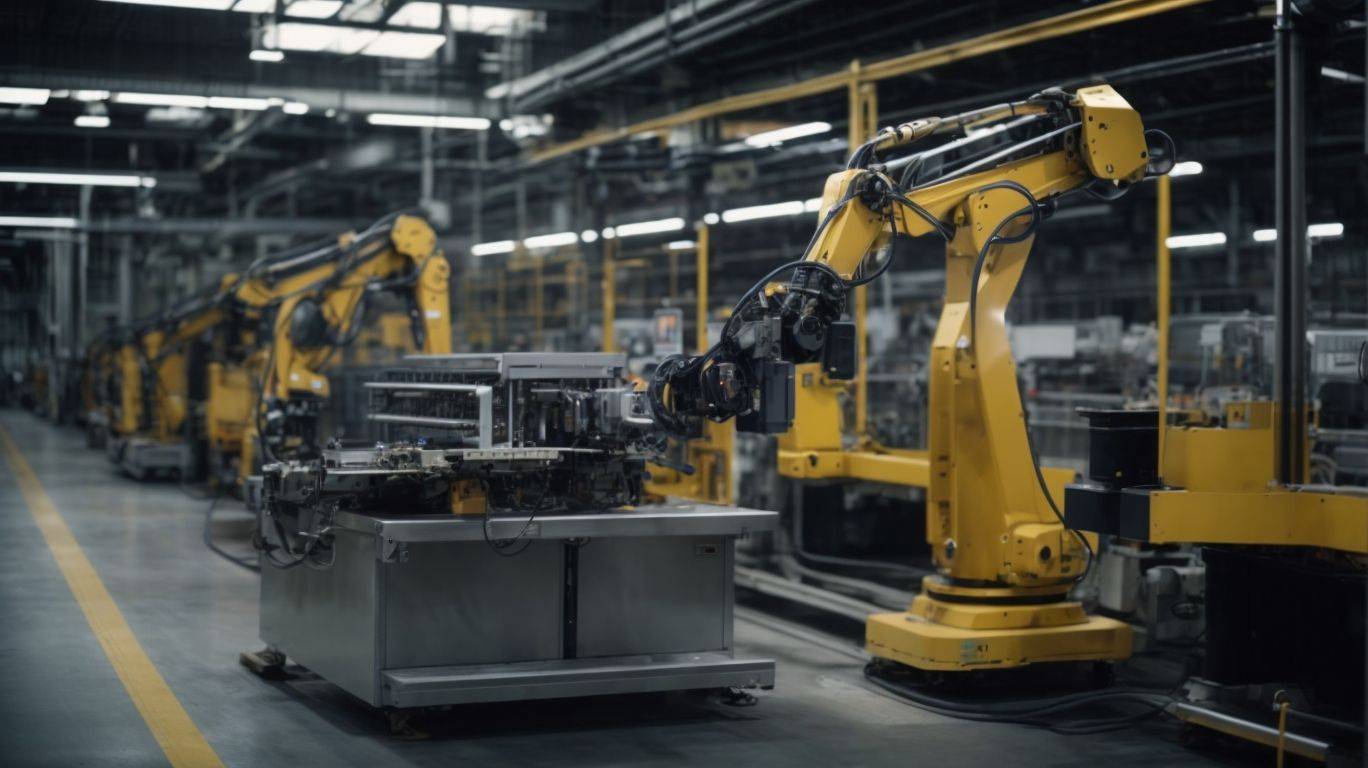Ever wondered how errors in robotics can impact manufacturing processes?
We will explore the common types of errors that occur in robotics used in manufacturing facilities. From software glitches to hardware malfunctions, we will discuss the potential causes of errors and their consequences on production efficiency.
Learn how manufacturers are addressing these challenges and improving the reliability of their robotic systems.
Key Takeaways:
Overview of Robotics and Automation in Manufacturing Industry
The robotics and automation sector in the manufacturing industry has witnessed significant advancements driven by innovative technologies, including Artificial Intelligence and industry 4.0 principles.
In the modern era, robotics and automation have evolved to become integral components of smart factories, leveraging AI algorithms to enhance decision-making and streamline production processes.
Industry 4.0 has paved the way for interconnected systems, IoT devices, and cloud computing, creating more agile and responsive manufacturing environments.
The integration of smart sensors and machine learning algorithms enables flexible manufacturing systems that can adapt to changing production requirements with efficiency and precision.
These advancements play a crucial role in optimizing operational costs, reducing downtime, and improving overall productivity in various manufacturing applications.
Types of Robots Used in Manufacturing
Various types of robots are employed in manufacturing processes, each designed to cater to specific tasks based on factors such as payload capacity, speed, accuracy, and workspace requirements.
Regarding categorizing robots in manufacturing, three primary types stand out – SCARA robots, delta robots, and collaborative robots. SCARA robots (Selective Compliance Assembly Robot Arm) are known for their speed and precision, making them ideal for tasks that require high repeatability and accuracy. These robots excel in assembly operations, pick-and-place tasks, and material handling. On the other hand, delta robots are characterized by their incredible speed and agility. They are commonly used in applications such as packaging, sorting, and high-speed pick-and-place tasks where rapid movement is crucial. Collaborative robots, also known as cobots, are designed to work alongside human operators safely. These robots are flexible, easy to program, and can handle tasks that require the delicate touch of a human worker, making them suitable for small-batch production and intricate assembly processes.
Integration of Digital Technologies in Automation
The integration of digital technologies like the Internet of Things, AI, big data analytics, and sensors has revolutionized automation in manufacturing, offering enhanced capabilities and efficiencies.
These technologies have significantly optimized production processes by enabling real-time data collection and analysis, predictive maintenance, and adaptive manufacturing systems that can respond to dynamic market demands.
IoT applications have played a pivotal role in creating interconnected smart factories, where machines communicate with each other to streamline operations and improve overall productivity.
Moreover, AI-driven solutions have enableed manufacturers to automate complex decision-making tasks, enhance quality control measures, and minimize human errors in production lines.
Challenges related to interoperability between different systems and data management in handling massive datasets pose hurdles in fully realizing the potential benefits of these advanced technologies in manufacturing.
Advancements in Robotics: From History to Modern Innovations
The journey of robotics in the industry traces back to the development of the first industrial robot, UNIMATE, marking a transformative milestone that paved the way for modern innovations in robotics.
Following the breakthrough with UNIMATE, the industrial landscape witnessed a rapid evolution in robotics. One notable innovation that emerged was the Programmable Universal Machine for Assembly (PUMA) robot arm, designed by Victor Scheinman in the 1980s. This versatile robot arm revolutionized automation in various industries, offering precise and programmable movements.
The advent of arc welding robots further enhanced industrial capabilities, streamlining manufacturing processes with high levels of accuracy and efficiency. These robots significantly improved production outputs and quality in sectors such as automotive, metal fabrication, and electronics.
Control systems also witnessed significant advancements with the introduction of joint-mounted motors, allowing for more precise and coordinated movements of robotic arms. Manufacturers like Motoman ERC and Linatex played pivotal roles in developing advanced robotics solutions, setting new standards for automation technologies in the industry.
Frequently Asked Questions
What is the role of robotics in manufacturing?
Robotics in manufacturing refers to the use of automated machines or robots to perform various tasks in the manufacturing process. These robots are programmed to perform specific tasks, such as assembly, welding, and painting, with high precision and efficiency.
How does robotics improve the manufacturing process?
Robotics in manufacturing can improve the process by increasing productivity, reducing human error, and improving overall quality control. Robots can work continuously without breaks, which leads to faster production and reduced downtime.
What are the benefits of using robotics in manufacturing?
Some benefits of using robotics in manufacturing include cost savings, increased safety, improved product quality, and increased production speed. Robots can also work in hazardous environments, reducing the risk of injury to human workers.
What types of tasks can be performed by robots in manufacturing?
Robots in manufacturing can perform a variety of tasks, including material handling, welding, painting, assembly, packaging, and quality control. They can also handle repetitive and dangerous tasks, freeing up human workers for more complex and skilled tasks.
How is human-robot collaboration changing the manufacturing industry?
Human-robot collaboration, where humans and robots work together in the manufacturing process, is changing the industry by increasing efficiency and flexibility. By working together, humans and robots can utilize their strengths and improve overall productivity.
Are there any downsides to using robotics in manufacturing?
While robotics in manufacturing offers many benefits, there are some potential downsides to consider. These include high initial costs, the need for specialized training and maintenance, and the possibility of job displacement for human workers. However, with proper implementation and management, these issues can be minimized.


